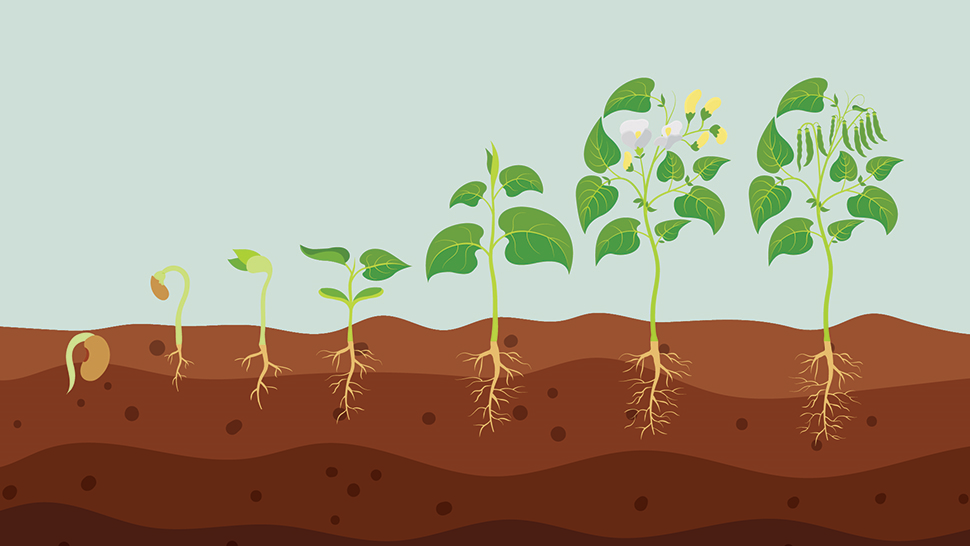Fixing the Future with Beans is How
- by bonappetit

How do we meet the needs of our many global crises, from food insecurity to combatting the climate crisis? Never fear — beans are here! They are a simple, affordable solution to our multifaceted global health, environmental, and cost of living challenges, offering a tasty way to fix the future.
In 2022, we joined Beans is How, a coalition of now 120+ partners working together to double global bean consumption by 2028. We sat down with them to ask questions about how beans can support soil health for Earth Day this year.
First off, why are beans the solution to fix the future?
Our world is faced by many complex challenges: nearly 30% of the world’s population do not have consistent access to food, the wealth gap between the poorest and richest countries continues to widen, and our environment is at risk due to the quickly accelerating climate crisis, the loss of biodiversity, and the overuse of natural resources.
The small but mighty bean offers a promising solution to these challenges. They are a simple, convenient food choice that is kind to our bodies, the planet, and our wallets. When scaled up, they have the potential to dramatically transform the food system towards a healthier, sustainable, and more prosperous future.
Our theme for Earth Day this year focuses on the importance of cover crops to support soil health. How do beans play a role in protecting our soil?
Beans can fix atmospheric nitrogen through a symbiotic relationship with soil bacteria called rhizobium, which converts that nitrogen into a form usable by plants. Planting beans as a cash or cover crop helps reduce the reliance on synthetic nitrogen fertilizers which are made with fossil fuels. This can set up a chain of environmental benefits, as the overuse of chemical fertilizers is linked to other problems like the pollution of waterways and formation of harmful algae blooms and dead zones in large lakes and oceans.
The special nitrogen-fixing ability of legumes helps boost soil fertility while also providing all the other amazing benefits of cover crops to soil health, including reduced erosion and improved water retention and soil structure.
What other benefits do beans provide to plants and people?
I’m glad you asked! Beans are great for people—they are notoriously fiber-rich and nutrient-dense, and are packed with plant protein. They have plenty of vitamins and minerals including potassium, iron, and B vitamins, and have been linked to many positive health outcomes.
They are also one of the most climate-friendly sources of protein, leading to significantly fewer carbon emissions than all other animal-based proteins. They require less water and land than other sources of protein, and many beans are known for their drought and heat tolerance which will continue to be essential climate adaptations. They also have a long shelf life and can be stored in a variety of ways (dried, canned, frozen, etc!) which reduces food waste and associated climate impacts from food going to landfills.
Lastly, we’d like to emphasize how beans help promote global prosperity by providing a culturally relevant and versatile food option that is economically accessible, especially when scaled up to the extent we need to transform our food system towards more plant-based protein sources. The opportunity for innovation is immense. As we’ve demonstrated, what can’t beans do?!
What advice would you give to anyone interested in getting more beans into their diets?
The options are endless, and are easily adapted to your own preference, taste, and lifestyles. Firstly, beans, peas, chickpeas, and lentils are available dried, canned, jarred, frozen, or in flour form. Cooking your own dried beans or using pre-cooked canned beans both provide similar nutritional benefits, so use whatever works best for you.
When cooking, don’t shy away from adding spices, herbs, aromatics, and other seasonings to spruce up your beans. They can be eaten as a side, or you can make them the main event. Experiment with bean-based pastas and flours made from lentils and chickpeas, which are increasing in popularity and availability. For additional texture or nutrients, you can add them into soups, on top of salads, or puree them into spreads. Lastly, use beans, peas, and lentils as a passport to exploring other culinary traditions and cultures, while finding nostalgia for some of your own favorite meals. The exciting world of beans awaits!